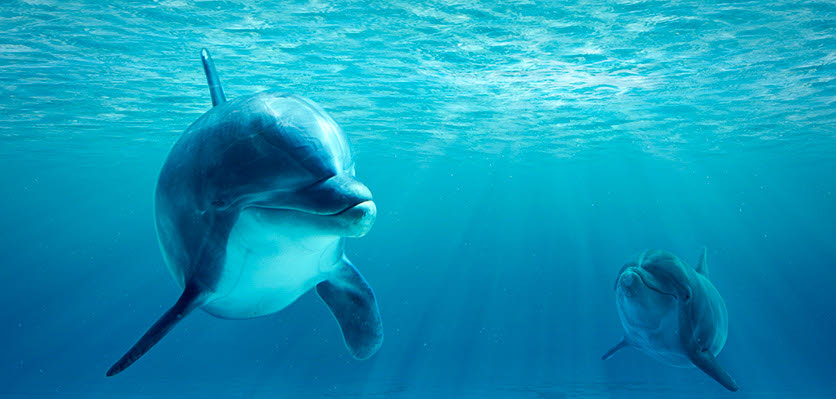
In a recent study from Cambridge University, sheep were taught to identify celebrity faces from photographs, with the long-term aim of using sheep as an animal model for Huntington's disease.1
A similar study has turned the tables and put humans to the test in recognising dolphin faces. And not just for the fun of it. The ability to recognise individual cetaceans can greatly enhance our understanding of their behaviour, biology, ecology and population dynamics, and benefit conservation and scientific efforts. Current methods of identifying individual cetaceans include natural markings such as scars, notches and skin pigmentation, dorsal fin and fluke recognition.
With recent advances in digital technology, where once photographs of dolphins for research purposes had to be taken sparingly, now a multitude of images can be easily taken and cheaply stored. Putting these technological developments to good use, researchers from Europe proposed that human recognition of dolphin facial features is a viable method of identifying individual dolphins.2
Researchers collected photographs taken between 2002 and 2014 to select 20 common bottlenose dolphins. Dolphins were selected if photographs of their dorsal fin and both the left and right sides of their face were available and if they could be reliably matched to photo-identified dorsal fins. A panel of biologists, 14 experienced and 13 inexperienced in dolphin identification, were asked to match dolphin faces from three photograph sets: one containing left-side shots of the 20 dolphins; one containing different left-side shots of 10 of the 20 dolphins; and the last containing right-side shots of the same 10 dolphins.
The researchers found that although the experienced participants were better at identifying dolphin faces than the inexperienced ones, all participants were able to identify the dolphins significantly better than expected by chance. What’s more, the participants were also able to match left- and right-side photos significantly better than expected by chance, suggesting that dolphin faces are symmetrical. The success in identifying individuals suggests the longevity of facial features and will be useful in following individuals through long-term studies, particularly young calves and juveniles that tend not to have distinct markings.2
However, identifying individuals using facial features is not a replacement for current techniques, given that not all dolphins have distinctive facial features that are easily identifiable by humans. Moreover, it will not always be possible to obtain appropriate facial photos of individuals at varying stages of their life – dolphin calves more commonly surface their entire heads out of the water than adults. But if used in combination with existing methods, assessing dolphin facial features could help to more accurately identify individuals of the common bottlenose dolphin species and may be applied to other cetaceans.
References
- Knolle F, Goncalves RP, Morton AJ. 2017 Sheep recognize familiar and unfamiliar human faces from two-dimensional images. R Soc Open Sci 2017;4:171228.
- Genov T, Centrih T, Wright AJ et al. Novel method for identifying individual cetaceans using facial features and symmetry: a test case using dolphins. Marine Mammal Sci 2017, doi: 10.1111/mms.12451.
This article appeared in the January/February 2018 issue of the Australian Veterinary Journal
